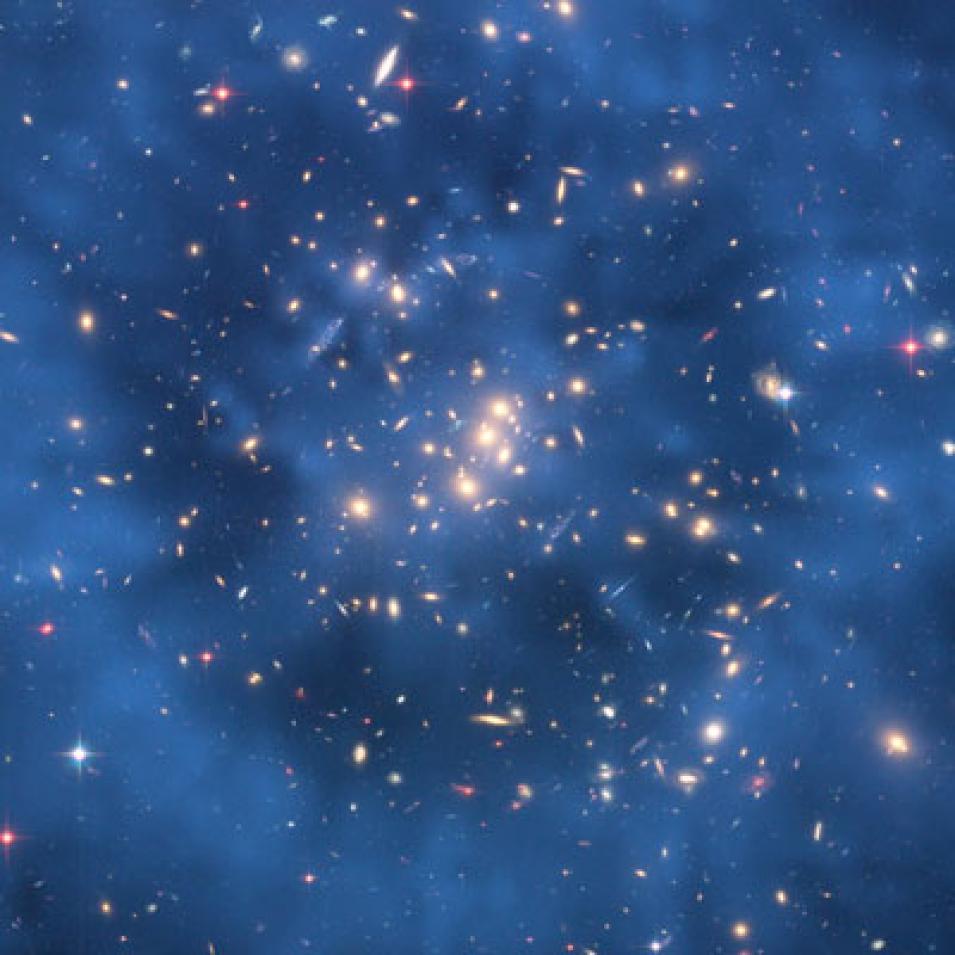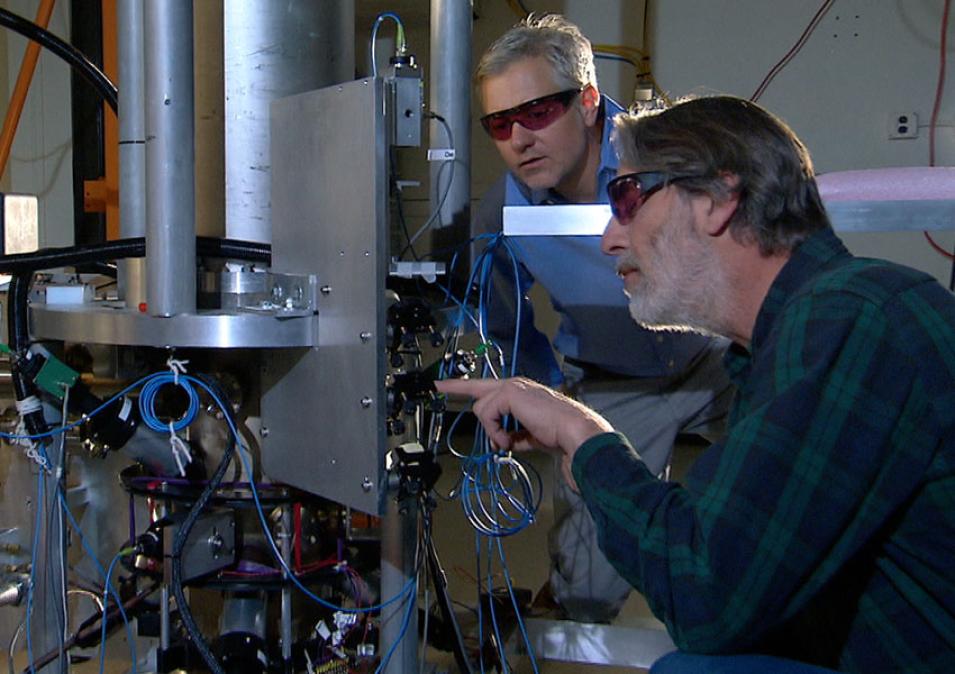Atomic clocks are extremely accurate timepieces. A traditional clock may use a spring and balance wheel oscillating to mark time. An atomic clock counts the oscillations of an atomic electronic cloud. The atomic clocks that currently set the time standard for the U.S. use a fountain of cesium atoms to determine the exact length of a second; these clocks neither gain nor lose a second over about 100 million years, though even more accurate clocks do exist.
Geoff Blewitt at the Nevada Bureau of Mines and Geology explained how an array of atomic clocks could possibly detect dark matter. He said, “It might look like a wall between two parts of the universe. As the Earth is going around in our solar system and galaxy, we are passing through these walls once in a while. The laws of physics change very slightly as we pass through. This will affect an atomic clock. Andrei’s concept is that we could look for variations in atomic clock time.”
Derevianko and Pospelov have proposed that based on observations and simulations, astronomers have a good idea of how dark matter moves around the solar system. The defects would fly through the Earth at galactic velocities, approximately 300 kilometers (186 miles) per second. The dark matter would shift atomic frequencies, and as a clock swept through, it would become temporarily out of time with other atomic clocks. So they proposed to comb through atomic clock data to look for these out-of-sync nano-moments.
“You look for ways to find too many or not enough forks, you look for atomic clocks that eat the salad twice as fast because they have two forks, or don’t eat the salad because they have no forks, that’s what you look for,” Lang said.
Satellites and dark matter
While arrays of atomic clocks exist on the Earth’s surface, researchers were more intrigued by the array of atomic clocks in space. Thirty Global Positioning System (GPS) satellites each carry four atomic clocks aboard. GPS receivers on the ground use these time signals from GPS satellites to triangulate their position on the Earth. The greater spatial distribution of the clocks on the satellites gives researchers a much larger picture in which to look for these tiny, temporary time discrepancies. Blewitt said, "Based on Earth's rotation, one of our topological defects would pass through in 200 to 300 seconds. So we should look for glitches in satellite clocks, a pattern, a sweep across the whole constellation."
“We have all the technology in place because of the other applications of GPS. We have tremendous data to look at, really good data going back ten years,” Blewitt said.
Initially the team has been looking at GPS data from the International Global Navigation Satellite System Service (IGS) data archive at NASA's Crustal Dynamic Data Information System (CDDIS). “They publish data for every 30 seconds. We can do better than that,” Blewitt said. “GPS can give you data every second, so it’s really no problem to estimate every fifteen seconds.” As a next step, they are starting to look at the high-rate GPS data archive at CDDIS, which includes GPS, Russian Global Navigation Satellite System (GLONASS) satellites, and Europe’s Galileo satellites, sampled every second and distributed in near-real time.
Lang said, “That’s where their idea is so beautiful and fresh, and so generic. Plus it’s easy. All those atomic clocks are out there.”
So far the idea is holding up. If the researchers continue to see promising information in the data, they might further refine their search. For example, some of the clocks on GPS satellites are rubidium clocks, and some are cesium clocks. They might constrain their data to the more accurate cesium clocks, and possibly propose the development of a larger network of the most accurate clocks.
Blewitt said, “If we do it, it will be huge news. I’m not really expecting to see it; the chance of any one hypothesis working out is needle in a haystack. But you have to look.”


